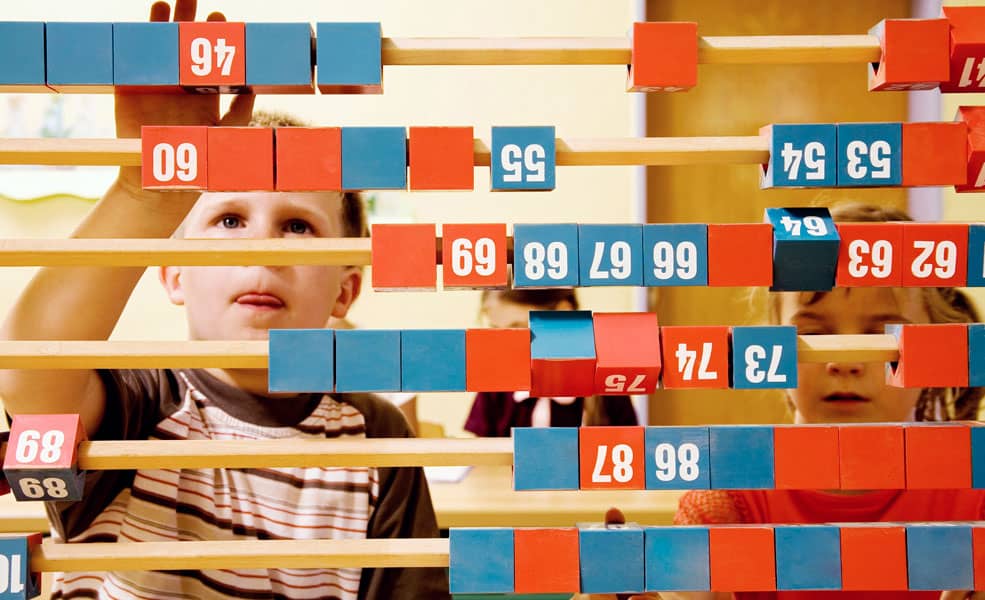“Play is often talked about as if it were a relief from serious learning. But for children play is serious learning. Play is really the work of childhood.” – Fred Rogers
Math and play
Children learn about themselves, others, and the world around them through play. They learn to problem-solve, be creative, and work with others. Children also learn about math through play. They explore numbers, patterns, and shapes. They compare size, they count, they build. Through play we can see that six categories of mathematical learning can take place:
- Classifying: this involving sorting like things together, and dissimilar things separately.
- Exploring magnitude: this involves comparisons of the size of objects against each other.
- Enumerating: this involving counting, but also using math language to describe things.
- Investigating dynamics: putting things together, exploring how their form can change.
- Studying patterns and shape: this can be explicit such as using geometric tiles to form an image or more implicit such as making jewellery and creating patterns with beads
- Exploring spatial relations: knowing where things are in space, why, how much space they take up.
Note that these categories of learning are not mutually exclusive either. Multiple forms of mathematical learning can occur at the same time through play. Therefore it is important that as educators we provide a free-play environment that is rich in a variety of play opportunities that can incorporate math and mathematical reasoning.
Encouraging Math and play
It is also important that we engage with children about their mathematical play by asking questions about their discoveries and approaches to play and problem-solving in a mathematical context. This includes questions of “How many?”, “Why did you sort them this way?”, “Where does this item fit?”, and more.
Items to include in the play environment that encourage math are:
- Building blocks
- Rhythms and patterns (not just with physical implements, but music as well)
- Water stations (with measuring cups, different sizes of containers, etc.)
- Sand and Playdough
- Manipulatives (for ex. teddy bear counters, pattern blocks, etc.)
- Computers (a really fun learning activity to do with children is to take apart an old computer and examine all of its parts and circuitry! Make sure you know what you are doing and take necessary safety precautions for this one)
Importance of play
Play precedes problem solving. Research suggests that if children are able to play with certain items before they are asked to solve problems with them, they are more successful and more creative. In the domain of mathematics, where a lot of students as they get older often experience a disconnect between math and the real world, it is important for us to use play around their experiences and give them the confidence to solve mathematical problems. We should also remember that children play mathematically quite naturally as long as we give them the tools and the space to do so. Therefore in order to promote math and play educators should:
- Observe children’s play
- Intervene sensitively
- Discuss and clarify ideas
- Schedule sufficient time for play
Visit the source site below for more great information and resources on math and play in early childhood education.
Source: Math Play: How young Children Approach Math by Scholastic

